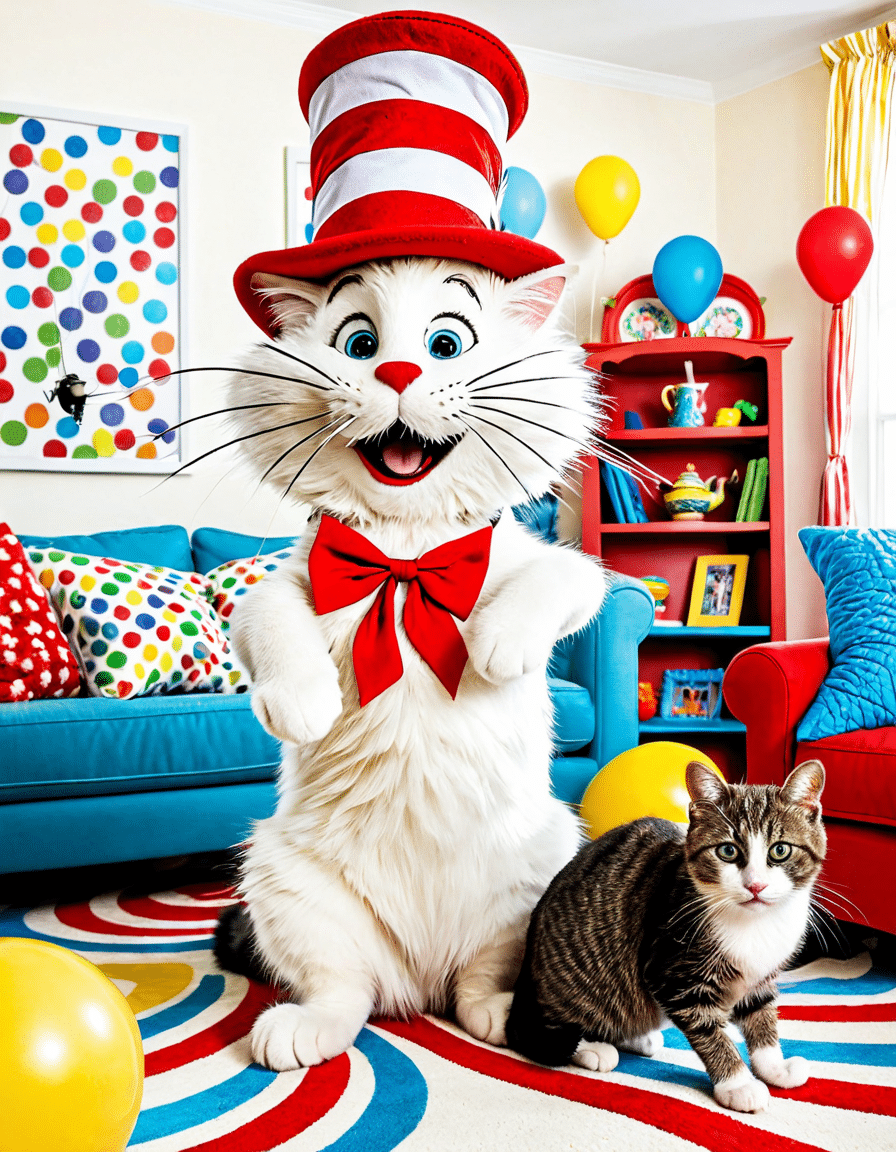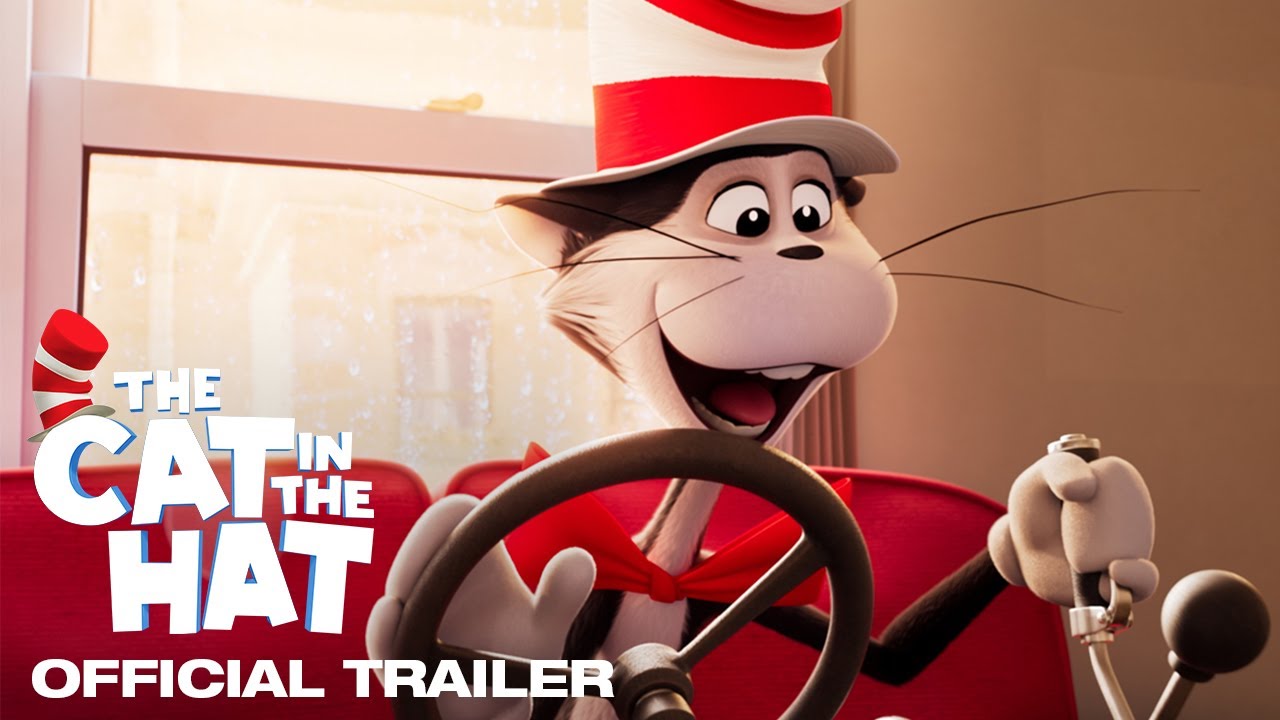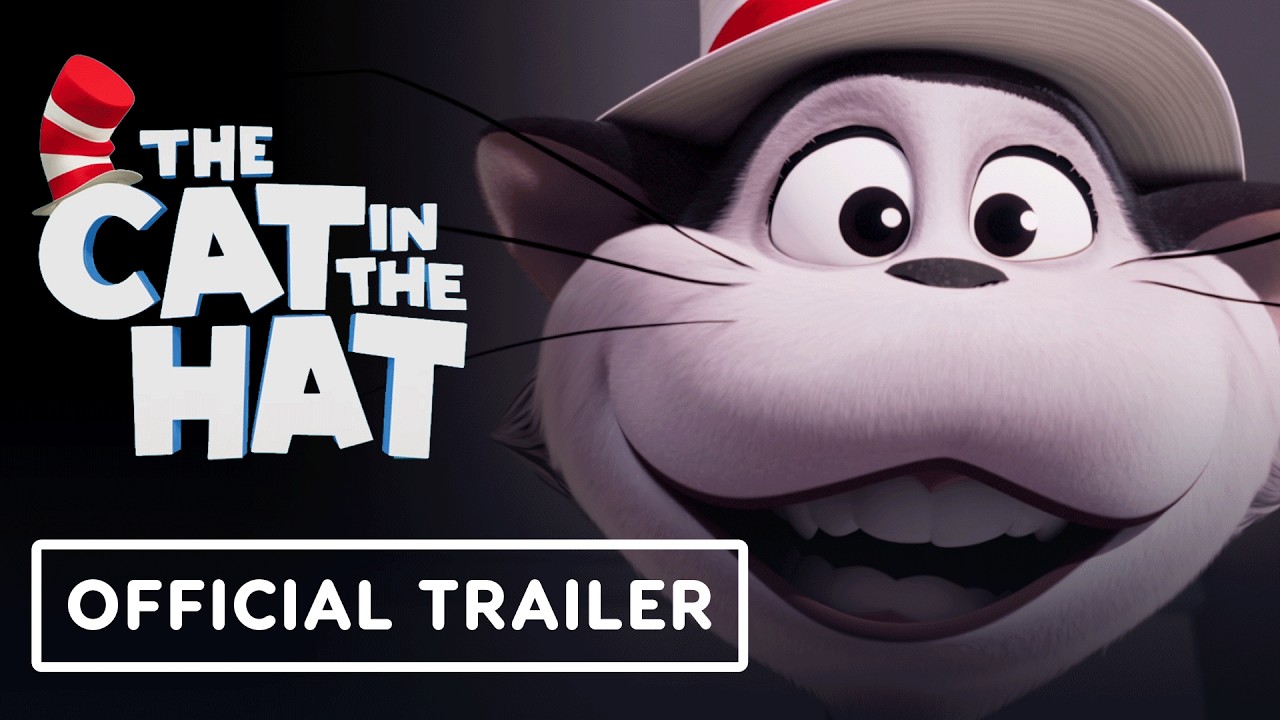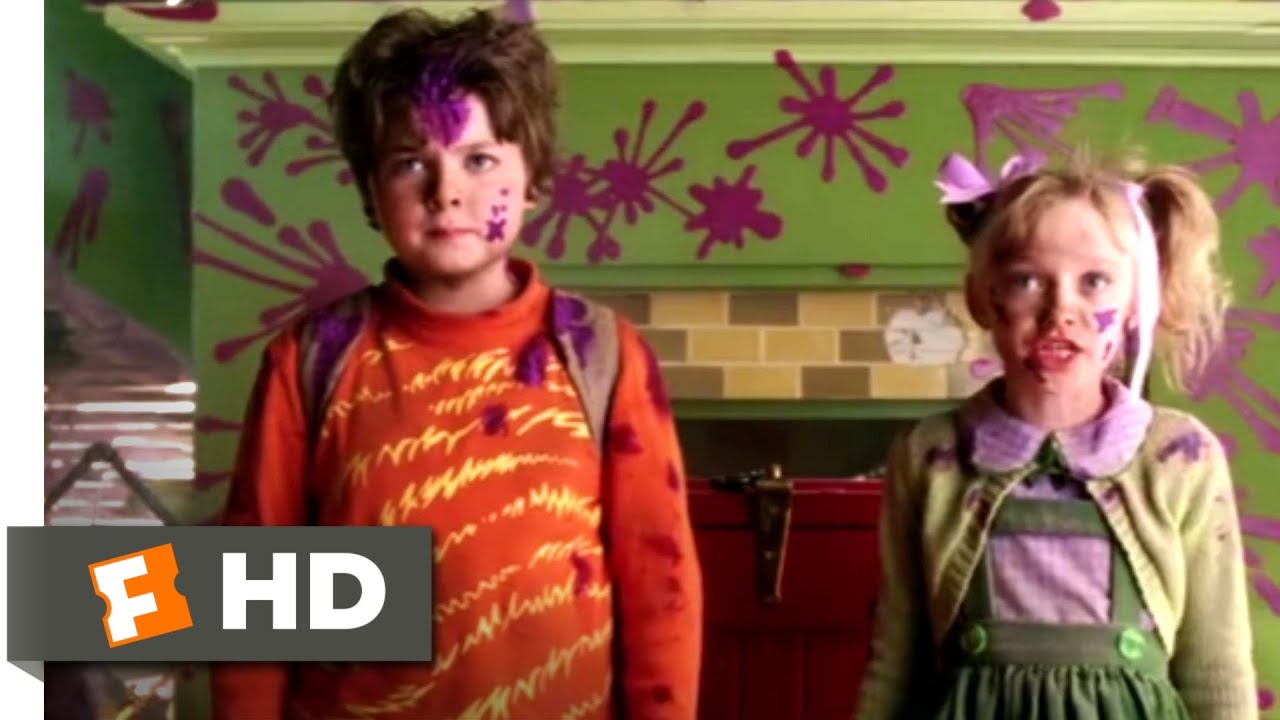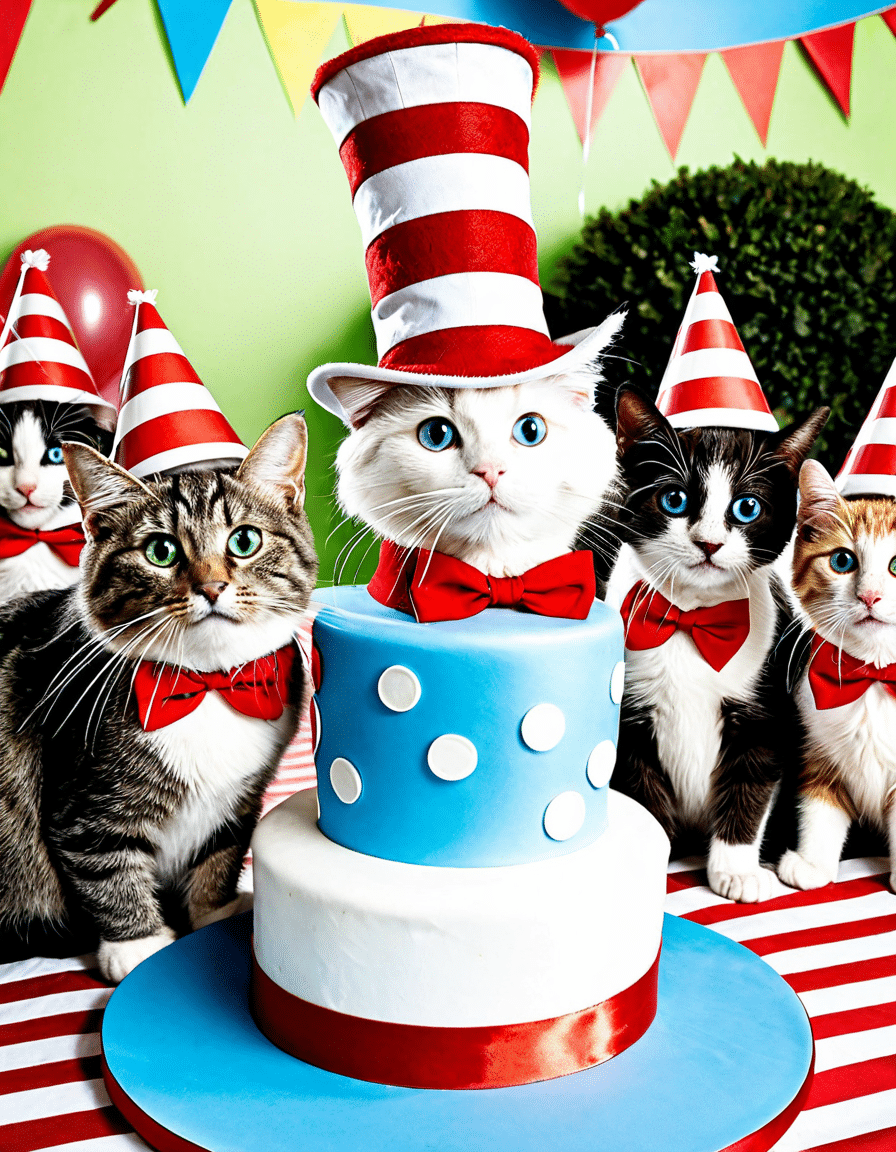
The Cat In The Hat Movie Is A Controversial Classic
In the world of family films, few adaptations have sparked as much debate as The Cat in the Hat Movie. Released in 2003, this vibrant film, directed by Bo Welch and featuring a frenzied performance by Mike Myers, turned Dr. Seuss’s beloved children’s book into a polarizing cinematic experience. Now, as we find ourselves in 2026, the Cat in the Hat Movie remains a hot topic for families, film critics, and nostalgic adults reminiscing about their childhoods. But is it a classic that stands the test of time, or a misfire that failed to capture the magic of the source material?
Let’s dive into why The Cat in the Hat Movie continues to spark controversy, and explore its complexities that make it both a classic piece of cinema and a subject of heated discussions among movie lovers, parents, and filmmakers alike.
5 Reasons Why The Cat in the Hat Movie Sparks Controversy
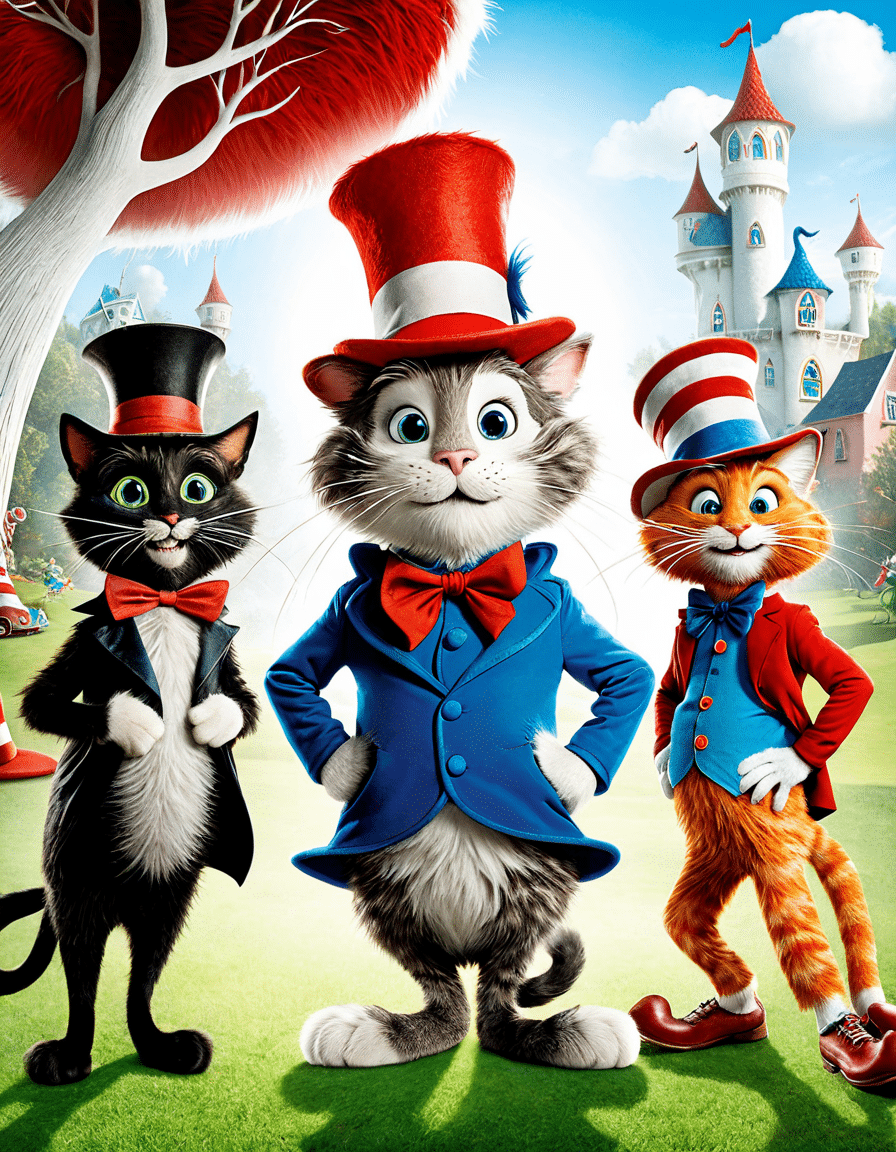
1. Deviation from Source Material
Right off the bat, this film diverges greatly from the original text and tone of Dr. Seuss’s timeless book. While the book charms readers with its rhythmic prose and moral lessons, the movie ramps up the slapstick humor and introduces wild plot twists that many feel detract from its simple story. This shift has left a sour taste in the mouths of die-hard fans of the book and introduced a rift among moviegoers.
The bold choice to cater to both children and parents has confused a lot of viewers. Families expecting a loving rendition of a cherished tale were met instead with bizarre scenarios that stray far from Seuss’s quaint vision. It’s like looking for a sweet treat and getting a sour candy instead!
2. Performance and Style of the Cat
When it comes to Mike Myers’ take on the Cat, opinions seem to split right down the middle. Some view his energetic portrayal as an inventive twist that breathes life into the character, while others see it as a feverish escapade that misses the mark entirely. In a way, Myers’ performance embodies a whirlwind, capturing the character’s mischievous nature, yet the chaos also overshadows the warm whimsy that fans adore in the book.
Interestingly, his rendition is reminiscent of other larger-than-life characters in family films, but one can’t help but wonder if the Cat truly needed that level of hyperactivity. If you’re looking for a more subdued take, you might think of characters portrayed by Robin Williams in films like Mrs. Doubtfire, where a balance of comedy and heart is struck. That said, the maniacal energy Myers brings certainly makes you sit up and take notice.
3. Target Audience Confusion
One of the most glaring issues with The Cat in the Hat Movie is its ambition to cater to a wide-ranging audience. It stumbles with a blend of adult humor that rarifies the experience for younger viewers. Many parents found themselves squirming in their seats as jokes landed a bit too close to the line things that are, let’s say, better suited for the grown-ups.
Critics have been vocal about the film being inappropriate for the target audience of preschoolers and those early elementary kids who simply adore the book. When nostalgia leads to disappointment, it can create rifts in family viewing experiences. Picture a five-year-old giggling at a bathroom joke that flies over their head while bewildering parents shake their heads in disbelief!
4. Visuals and Special Effects
The Cat in the Hat Movie dazzles with its colorful aesthetic and hyper-stylized set designs that burst with Dr. Seuss’s imaginative flair. However, opinions on whether these elements enhance or distract from the story are decidedly mixed. The extensive use of CGI combined with practical effects invites you into this fantastical world, but some viewers feel it overshadows the essence of character development and storytelling.
When you think about movies that balance a vivid visual experience with narrative depth, classics like Alice in Wonderland and Charlie and the Chocolate Factory spring to mind. They manage to create enchanting worlds without letting the visual excitement drown out their characters or story arcs. That’s a delicate dance, and unfortunately, The Cat in the Hat Movie seems to stumble here.
5. The Reception of the Cat in the Hat Cast
Beyond Myers, the Cat in the Hat cast adds layers to the film’s identity. Dakota Fanning, cast as Sally, shines as the relatable protagonist, and Spencer Breslin’s portrayal of the rebellious Conrad brings a different dynamic to the film. But it’s the interplay between these characters and the Cat that ignites discussions around character depth and relatability.
While Fanning’s performance seems to resonate well, critics were less generous regarding Breslin’s character. Is he more of a brat or just a typical little brother? The answer often varies based on who you ask, reflecting the film’s chaotic nature. Would a more cohesive character arc make the movie feel richer? It’s a haunting question if you’re a fan of substantial storytelling in family films.
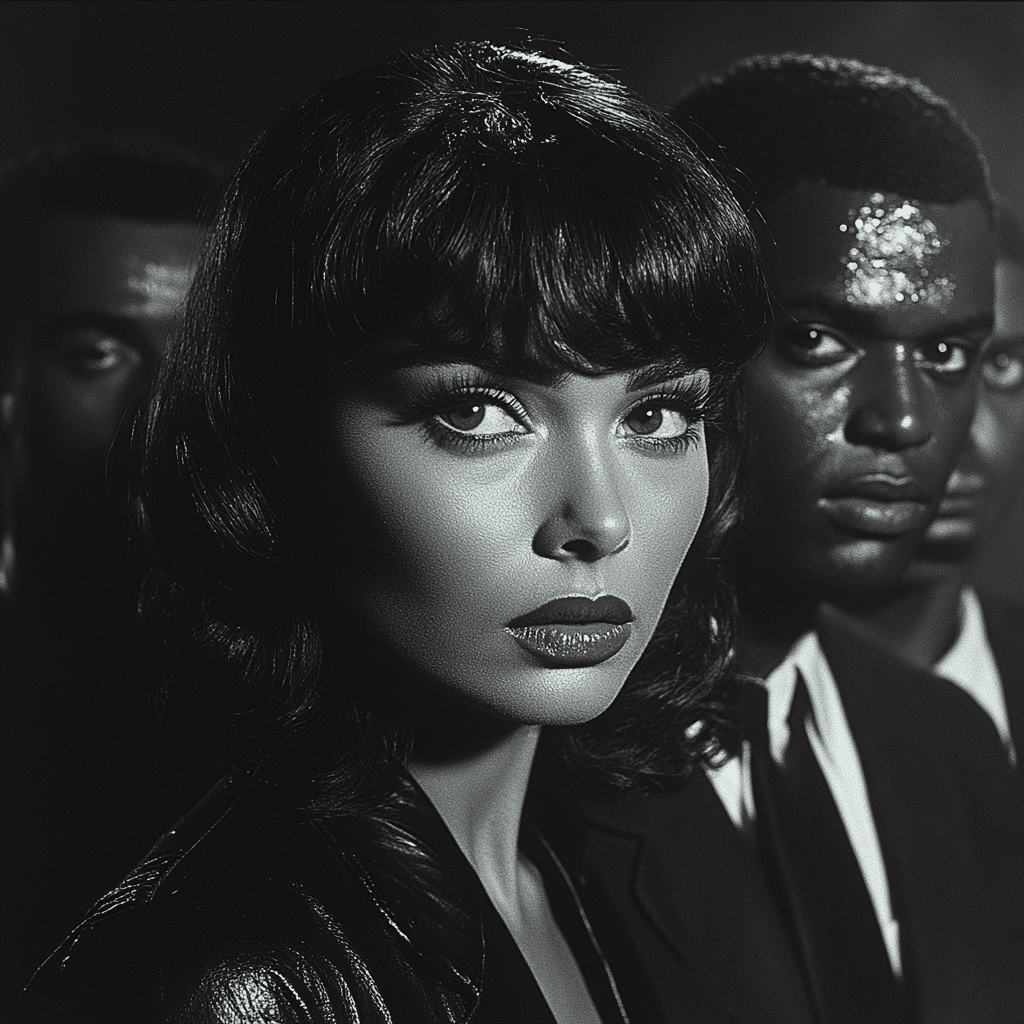
The Cultural Impact of The Cat in the Hat Movie
Despite its controversies, it’s undeniable that The Cat in the Hat Movie has carved out a niche in pop culture. It maintains a devoted following, especially among those who grew up watching it in their formative years. The film’s bold mix of humor and style—and the star-studded cast—have left a lasting impact, even as it divides audiences.
The Nostalgia Factor
Nostalgia plays a massive role in the movie’s controversial status. Millennials who cherished the film as kids still find themselves chuckling at its silliness, albeit while acknowledging its faults. It’s a complex connection; many view the film as a guilty pleasure, evoking a sense of innocence and fun from long ago.
You can see how generational ties to films influence how we view their quality. For instance, those who grew up watching cartoons like Animaniacs often enjoy them today, not for the pristine animation quality but for the laughter and fond memories they produce. It only goes to show that nostalgia can color our perceptions.
Legacy and Future Adaptations
In recent years, various studios have aimed to revive interest in Dr. Seuss’s works, sparking speculation on how future filmmakers will approach adapting stories like The Cat in the Hat. Questions arise: Should creators remain faithful to the source material, or does creative freedom offer a chance to spark new conversations?
The failed attempt to create a sequel—The Cat in the Hat Comes Back—after the first film’s critical reception serves as a testament to the ongoing tension between adaptation and the spirit of the original works. Filmmakers now face the challenge of appealing to adults who remember these stories fondly while introducing them to new generations. Would a more thoughtful adaptation change the game? Would it inspire a wave of excitement or would it fall flat once more?
As we continue to dig into the legacy of The Cat in the Hat Movie, it’s clear this adaptation remains a focal point for passionate debate. While it is undoubtedly a controversial classic, its impact on both film and audiences calls for further exploration. The conversations surrounding the film highlight broader themes concerning adaptation, audience expectations, and the evolution of children’s entertainment. In essence, the film has prompted many discussions about managing beloved tales when they leap off the page and into the cinematic spotlight.
Whether you adore it or consider it a flop, the Cat in the Hat Movie has cemented its place in the lives of movie lovers, igniting conversations that will likely evolve alongside future adaptations. So, what are your thoughts? Do you believe the whimsical chaos enriches the original story, or does it simply distort the heart of Dr. Seuss’s beloved tale? Whether you’re singing “I do not like green eggs and ham” or pondering its impact, one thing’s for certain: The Cat in the Hat will continue to spin us into discussions for years to come.
The Cat in the Hat Movie: Fun Facts and Trivia
A Quirky Production History
Did you know that The Cat in the Hat Movie was directed by Bo Welch, marking his first time at the helm of a feature film? Before this, he worked as a production designer on classics like Beetlejuice and The Nightmare Before Christmas. With a unique comedic style, he attempted to make the fantastical world of Dr. Seuss come alive, but it didn’t sit well with all audiences. Interestingly, while The Cat in the Hat Movie faced criticism, it found unexpected success at the box office, much like how Pushpa took Bollywood by storm, racking up impressive numbers on its opening weekend, as detailed in the Pushpa movie box office collection.
Cast and Crew Shenanigans
The film features Mike Myers as the mischievous feline, but the casting process had its quirks. Jim Carrey was a top choice initially, and given Carrey’s energetic comedic style, one can only imagine how different the movie might’ve been. Myers brought a unique flair reminiscent of his work on Hollywood Squares, blending comedy with a hint of chaos. Moreover, the surprise cameo by the little-known actor who played the parents is actually notable—he’s now making waves in the indie scene, much like Chelsea Houska, who transitioned from reality TV to serious acting projects, and caught the industry’s attention due to her dynamic performances.
Catching the Eye of Young Audiences
The film may have polarized critics, but it gained a following among children, thanks to its vibrant visuals and zany humor. Kids adore the slapstick comedy that mirrors what you might find in iconic characters like Shrek’s Lord Farquaad. The colorful CGI and stylized set design provided an engaging backdrop for all the shenanigans, aiming to captivate young viewers. In a fun twist, the idea of talking to the Cat, often left kids feeling they could be part of the mischief—just like when they shout “thank you” in Portuguese, reminding their parents they want more snacks after the show (check out how to say thank You in Portuguese here).
A Unique Legacy
Despite mixed reviews, The Cat in the Hat Movie stands out in the landscape of adaptations. It fueled a debate about what it means to adapt beloved children’s literature into film—much like many Dove Cameron Movies And TV Shows challenge the norms of traditional storytelling. The blend of whimsical storytelling with adult humor plays a crucial role in how the film resonates with older audiences, too. Plus, can we talk about that iconic wall squat scene? It’s a quirky bit that sticks in the mind and sure is a fun reference point when discussing physical comedy inclusions in family films (take a look at the wall squat tips here).
In essence, The Cat in the Hat Movie remains a curious paradox—loved by kids, critiqued by adults, yet still a staple of childhood movie nights. Its cultural imprint, full of laughs and life lessons, is what keeps us coming back to explore this one-of-a-kind cinematic tale.
